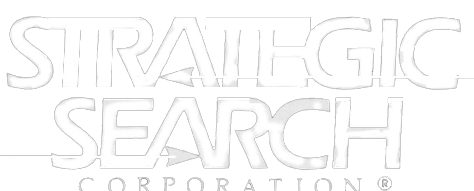IoT (Internet of Things) technical, engineering, IT (information technology), scientific, R&D (research and development) and manufacturing job recruitment is soaring! Salaries are soaring along with the increased demand.
Not only a technical marvel, IoT is also a social phenomenon. It is transforming both our perception of devices around us as well as the environment we live in! Therefore there are several current IoT trends where the machine and human worlds intersect.
The trends to look for are evident in big data and artificial intelligence (AI), cloud technology, edge computing, digital twin technology, 5G networks, innovation of sensors, social IoT and governance, infonomics as well as user experience.
Higher Staffing Salaries Required
Recruiting departments are scrambling to recruit key engineers and software candidates for IoT jobs. “Cybersecurity and IT security skills continue to net some of the highest salaries within technology departments,” according to Tim Johnson, CEO of Mondo. This was reported in Mondo’s annual Tech Salary Guide.
Two IoT positions in high demand are: a) IoT solution architect with a salary range of $140,000 to $210,000 and b) IoT software engineer with a salary range of $100,000 to $175,000.
Big Data and AI
The research firm Gartner forecasts a proliferation of Internet of Things in 2019 with 14.2 billion deployed connected. This will result in an immense volume of data which is the raw product of IoT.
Businesses are looking to implement technologies that can help them make sense of this massive amount of data generated from smart devices. With improved processing power that can increase machine learning productivity, digital leaders will recruit machine learning and AI to make more sense of their data.
Connected Clouds
Many companies rely on clouds to store their data, but costs for such services can be significant. This is particularly important for recruiting IoT applications because cloud storage requires a lot of bandwidth while accessing data. Furthermore these limitations have prompted the search for new cloud infrastructure.
As companies realize using only a public cloud, a private cloud or a private data center may not be their best option, they’re looking for the optimal mix of them. Connected clouds are gaining momentum to meet companies’ needs for cloud-source storage, networking, security, or app deployment.
In their pursuit of seamless, secure and streamlined service for Internet of Things, businesses will use a mix of workloads running in public, private and hybrid environments shaping the new “multicloud environment”.
Edge Computing and Beyond
Cloud storage will continue to be a hot topic in 2019. The shift from centralized and cloud to edge architectures will only act to intensify the IoT space in the near future.
Edge computing is a type of architecture where a network stores data in micro-centers for processing. It offers a cheaper and often a more effective solution for data handling.
Part of the data is stored locally next to the corresponding IoT device. This makes the data readily available when needed. The traffic on the network is thus reduced and bandwidth costs are minimized along with it.
However, it’s not the end point. The set of layers associated with edge architecture will eventually evolve into a more unstructured architecture. This architecture encompasses a wide range of devices and services connected in a dynamic mesh. Such “mesh” architectures enable more flexible, intelligent and responsive IoT systems.
Digital Twins
Digital twin technology is also known as a hybrid twin or virtual prototyping It refers to a virtual copy of a real-world product, asset, process or system that can be used for a certain purpose. It’s a simulation tool that works with AI, machine learning and the IoT to improve businesses’ experience by streamlining digital data operations.
5G Networks
5G, the forthcoming generation of cellular networks, is likely to gain attention in the IoT market. It optimizes power consumption, bandwidth, latency, connection density, operating cost, quality of service and range.
If 2018 was the year of fixed 5G applications, 2019 will embrace 5G in mobile devices and change the landscape of the IoT.
Sensor Innovation
The sensor market will also evolve continuously with new special-purpose sensors covering more situations and events. It will reduce the power consumption required to run deep neural networks. This in turn will enable new edge architectures and the use of DotNetNuke (DNN) functions in low-power IoT endpoint devices.
In response, current sensors are likely to become more affordable or support new applications. New algorithms will emerge to deduce more information from current sensor technologies.
Social IoT
The IoT is a very broad-based technology, transforming all business sectors, from consumer devices to large-scale manufacturing. Yet, it’s not clear if the public is fully prepared for its impact on their life.
As IoT matures, a wide range of social, legal and ethical issues will grow in importance. To be successful, an IoT solution shall be not only technically effective but also socially acceptable. This was pointed out by Nick Jones, research vice president at Gartner.
Included are ownership of data and the deductions made from it, algorithmic bias, privacy, and compliance with regulations such as the General Data Protection Regulation (GDPR).
IoT Governance
Speaking of the GDPR, we must add that as the IoT expands, the need for a governance framework that ensures appropriate behavior in the data creation, storage, use and deletion is becoming increasingly important.
Governance of the IoT-related projects will range from simple device audits and firmware updates to complex issues such as the control of devices and the strategic usage of the data they generate.
Infonomics
The concept of selling data collected by the company’s products and services is completely new. But the theory of infonomics takes data monetization to new heights.
Data will be seen as a strategic business asset to be recorded in the company accounts. It will entail the corresponding risks and opportunities related to data brokering.
User Experiences
The IoT is also changing the rules of human/device interactions usually without screens and keyboards. In the future, the IoT User Experience (UX) will be driven by four factors. These are: new sensors, new algorithms, new experience architectures and context and socially aware experiences.
UX designers will also have to adopt new perspectives without the use of screens and keyboards. They will rely on voice-controlled digital assistants.
When all is said and done, these forthcoming trends in IoT will prove to be both exciting and challenging.
Call me today at 312-944-4000 to discuss how Strategic Search can assist with your IoT (and other) engineering efforts. Or click here for full contact information.




